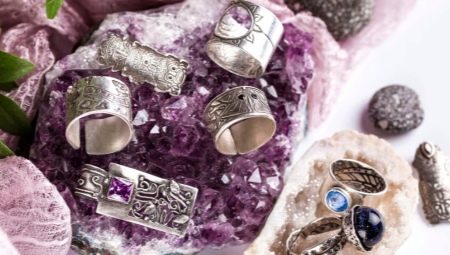Popular wisdom says that not all that glitters is gold. And actually it is. It is impossible to guarantee that a gold ring, acquired from a hand, is a genuine jewel. The same goes for silver.

How to authenticate?
Today, silver jewelry and items are sold on almost every corner. But here is the trouble. It is not always possible to find evidence of the authenticity of a precious metal on a product, which is why you have to turn to a jeweler for a fee.
Unfortunately, finding genuine silver today is quite difficult. Although this is not the most expensive representative of precious metals, its value increases, along with weight. In simple words, in order to gain a large amount for a product, various impurities are added to silver, respectively, the mass of the product becomes larger - and the price increases.
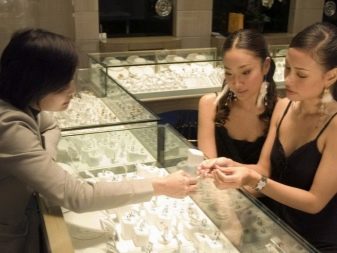
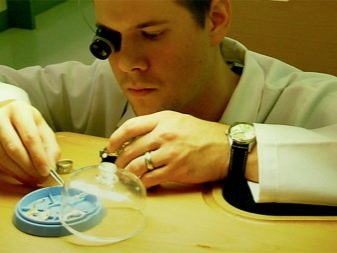
Employees of jewelry stores, providing advice, report the presence of impurities in certain products. But unscrupulous sellers of small jewelry outlets on the market prove with words the authenticity of silver, trying to distract buyers from the lack of samples. And only at home the owner of the new silver jewelry has some doubts. A jeweler’s consultation immediately comes to mind, however, you can find out fake silver or not at home.

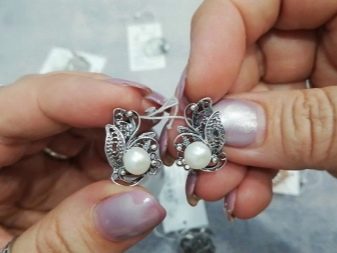
First of all, it is necessary to inspect the product. Each item made of silver has an engraved sample. This indicator is a small figure in a rectangular border. Unfortunately, in the age of innovative technologies, such a mark does not give a 100% guarantee of the naturalness of a product. Any unscrupulous seller with some equipment can engrave samples on any metal.

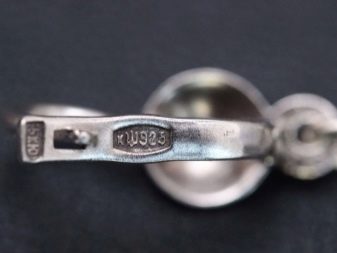
In order not to encounter the purchase of crafts, each consumer needs to put off certain knowledge in his memory, thanks to which it will be possible to choose a natural jewelry.
The first way to authenticate silver can be done at the time of purchase. The selected product must be taken in hand and held for several seconds in a clenched fist. As you know, silver is one of the best conductors of heat. Touching the human body, the noble metal instantly warms up.

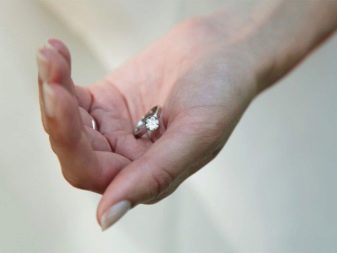
The second method of thermal verification will require a glass of boiling water. It is necessary to lower the silver product into the freshly boiling water and after a few seconds take it out. If this is genuine, the product instantly acquires a temperature similar to boiling water.
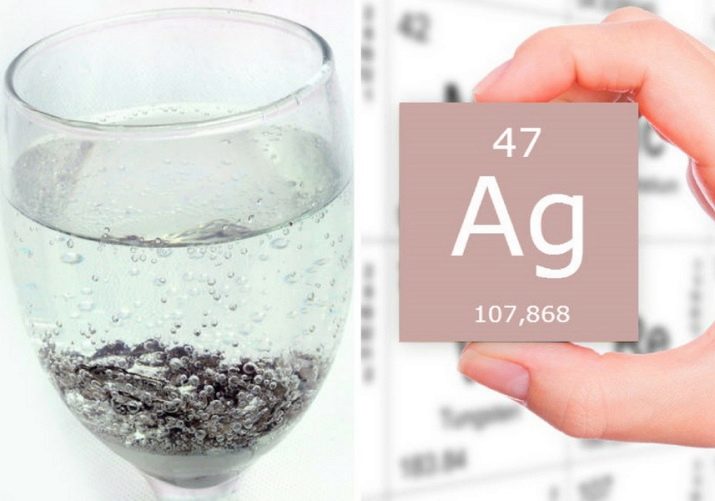
When buying a silver product, each person examines it from all sides. And after studying the external characteristics, you need to check your hands. If they remain clean, then the selected silver is the original. If your fingers and palms are blackened, then silver is diluted with zinc.
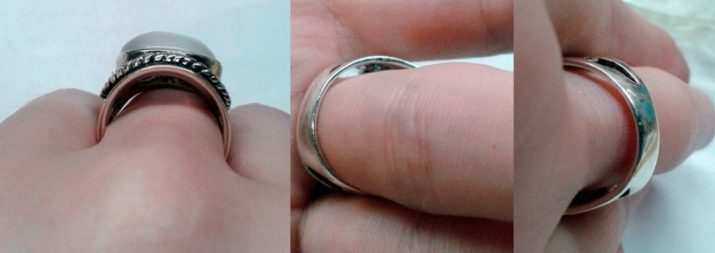
Quite often, unscrupulous sellers offer customers silver-plated jewelry made of copper and brass, which look like real silver. In such a situation, the most ordinary needle will help to determine the quality of the subject. Its tip must be carried out in the inconspicuous part of the decoration. In products with spraying, the surface layer will be erased, revealing the real inside. If the color under the spraying is the same, then the product is made of high-quality precious metal.
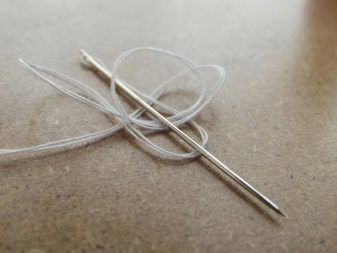
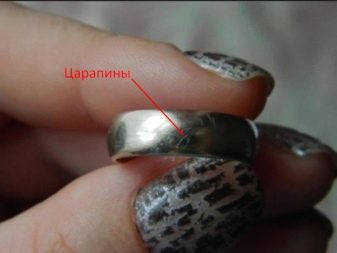
Redness or yellowness under spraying indicates that the proposed silver item is made of an alloy of brass or copper.
Few people know, but you can recognize a fake by the sound. It turns out that this noble metal has a sound that stands out clearly against the background of the dull grumbling of his brothers. The ringing of silver is light, long, creates a vibration.

Only genuine hearing owners can identify a genuine or fake product.
In the distant past, our ancestors could distinguish real silver by smell. It is impossible to describe how the precious metal smells. The smell remained in memory, and it was impossible to confuse it with other metals. However, today this method is not relevant. In the age of innovative technology, even the aroma of a precious metal can be faked.
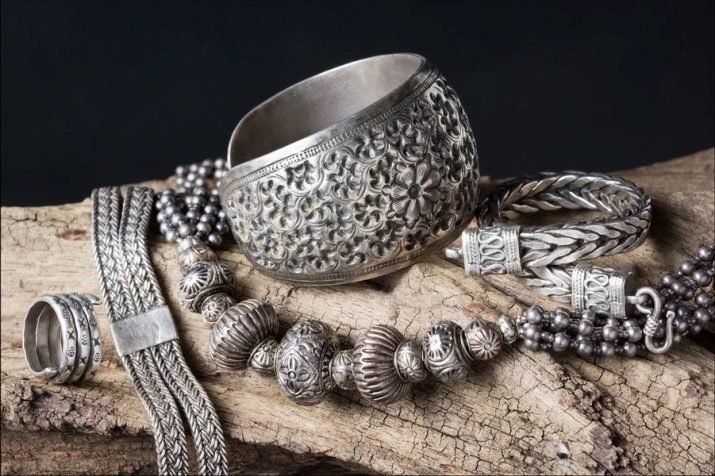
Another way to test a silver product is to have daylight. Natural silver has the ability to reflect rays. If you take, for example, a silver spoon and put it in the sun, it will sparkle in bright colors and blind the human eye.
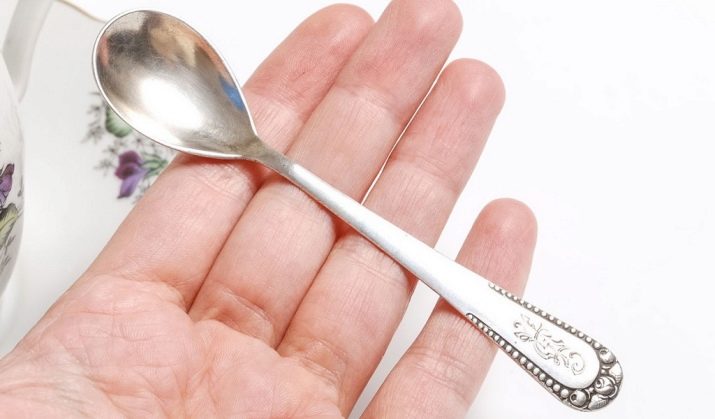
Magnet
A very common silver authentication method. Everyone knows that objects containing a high iron content are magnetized. But alloys with a small amount of chemical elements do not possess this property. It follows that silver is not magnetized.
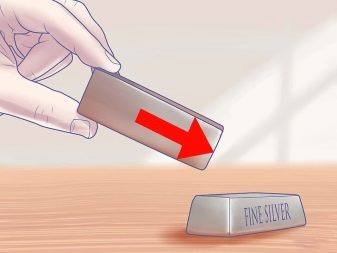
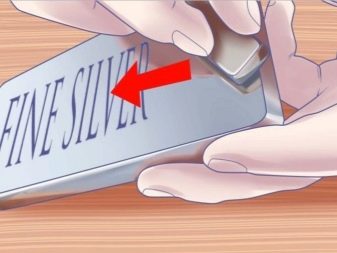
Accordingly, if a magnet attracts a product to itself, then its authenticity turned out to be false.
Iodine
Quite an interesting way to check with ordinary iodine. However, to conduct this experiment, it will be necessary to recall some rules of physics and chemistry.
When iodine reacts with silver, salt deposits called silver iodide form. The color of the derived element is similar to iodine liquid.
- Before embarking on an experiment, it is necessary to select the most inconspicuous part of the product, since after the test a spot will remain on the test area, which can be removed by grinding.
- It is necessary to moisten a cotton swab in iodine solution, and then touch the selected area of the product.
- Rinse the product, and after drying check the result.If a cloudy spot remains at the site of contact with iodine, the silver is genuine.
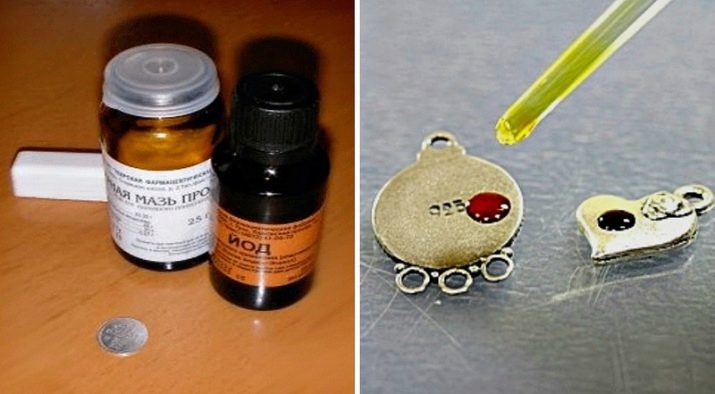
Chalk
It is necessary to make a small scratch on the product, then draw chalk over it. If real silver is in the hands, the place of the scratch will turn black.
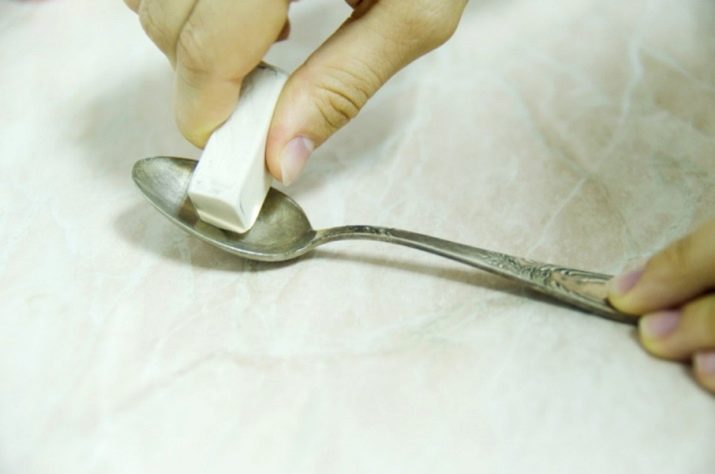
Vinegar
Testing silver with acetic acid cannot be called safe. Durable gloves will be required to carry out such a test. There are a number of steps to follow:
- it is necessary to make a small scratch with a needle;
- apply a small amount of acid to the scratched area, then pay attention to the reaction;
- if the foam turns green and starts to hiss, it means a fake in the hands;
- if the reaction did not occur, it is necessary to drip a solution of sodium chloride over the acid;
- in case of authenticity, a white haze will occur.
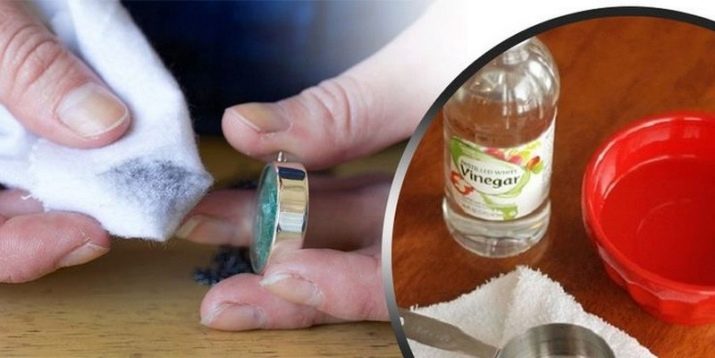
Nitric acid
Silver authentication with nitric acid provides the most accurate results. However, it is necessary to apply the liquid in minimal doses to the most inconspicuous place. Thanks to nitric acid, it will be possible to determine not only the authenticity of silver, but also to identify its alloy.
It is necessary to make a small scratch and apply nitric acid on top of it. If the scratch site turns green, then this is a brass or cupronickel alloy. If the scratch turns black, it is a fake jewelry with a low silver content. If a cream shade has formed at the inspection site, then this is natural silver 925 and above.
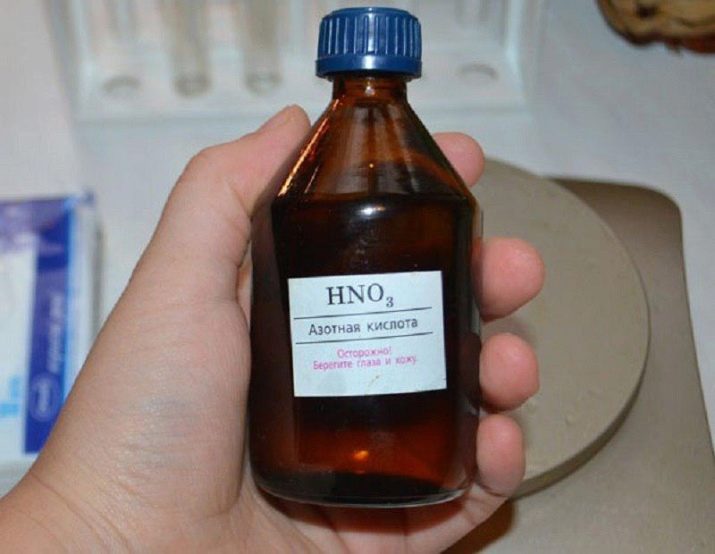
Lapis pencil
This medical device is used not only for the treatment and prevention of skin problems, but also allows you to verify the authenticity of silver. To use it, you need to wear gloves on your hands. On the table, lay out the jewelry to be checked and draw on them with a lapis pencil. If a dark spot appears at the place of the pencil, then this is a fake.
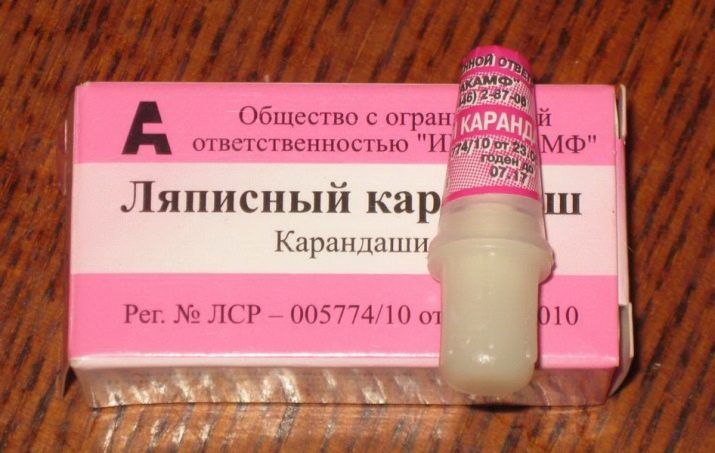
How to determine the sample?
It is very difficult to conduct tests to identify a sample of a precious metal with your own hands. But if you are not distracted by extraneous matters, it is quite possible.
- Recognize the percentage of natural silver present in your favorite jewelry, chrompeak will help. Its other name is potassium dichromate. This reagent is used to determine silver starting from 500 samples. The surface of the product to be checked must be cleaned of grease and various contaminants, and then wiped with a dry cloth. Next, drop a few drops of chrompick onto silver, then wipe them with filter paper. In no case should you be in a hurry. An interval of 3 seconds between actions will be sufficient. If the product meets the sample index from 500 to 750, a light brown stain will remain in place of the wiped drops. The appearance of a red hue indicates a sample above 750. The product with a saturated bright red color of the spot after the reagent is silver 916 samples and above.
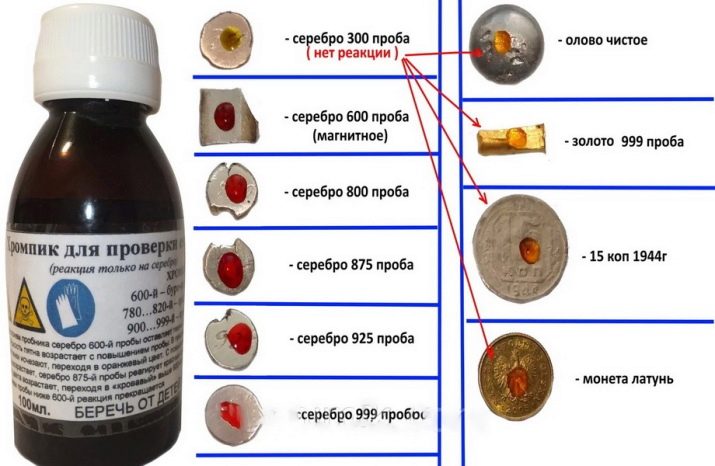
- Another method for determining a silver sample will require use of silver nitrate. First of all, the test product must be cleaned of grease stains and dirt, then a small drop of reagent should be applied to its surface. Next, monitor the color change of the liquid. A light gray hue says that the sample product is in the range of 750-916. A drop of reagent, which has turned white, indicates the low grade of silver.
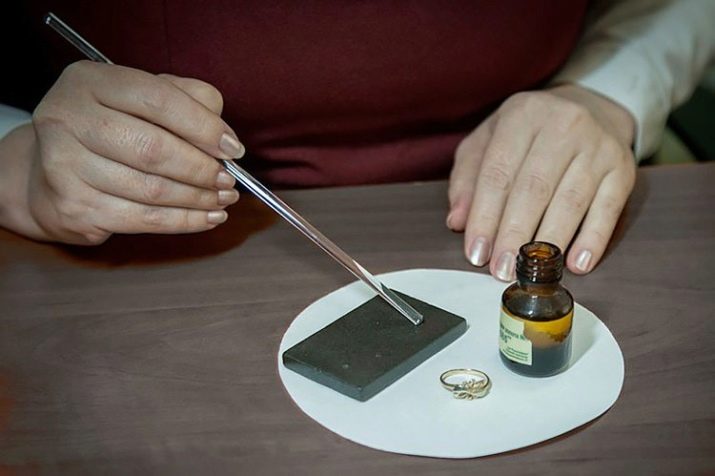
Unfortunately, it is impossible to give a 100% guarantee of the correct result even with such verification methods. After all, it happens that your favorite ring or chain is only slightly silver plated. Accordingly, only filed will help to determine the authenticity of the product and the sample indicator.
Today there is a special device used by professional jewelers. With its help, you can determine the preciousness of the metal and reveal all its qualities.
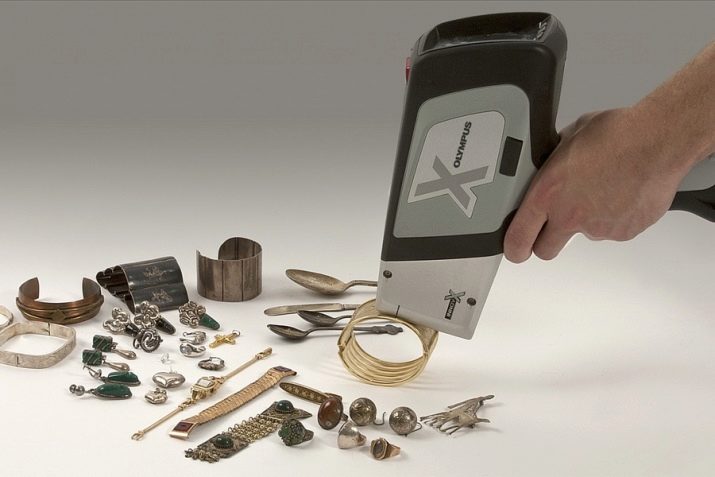
Special attention should be paid to technical silver. When creating it, the alloy used in the manufacture of contacts is used. Accordingly, the technical variety is different from real and silverware.However, to verify it, you can apply the methods presented earlier.
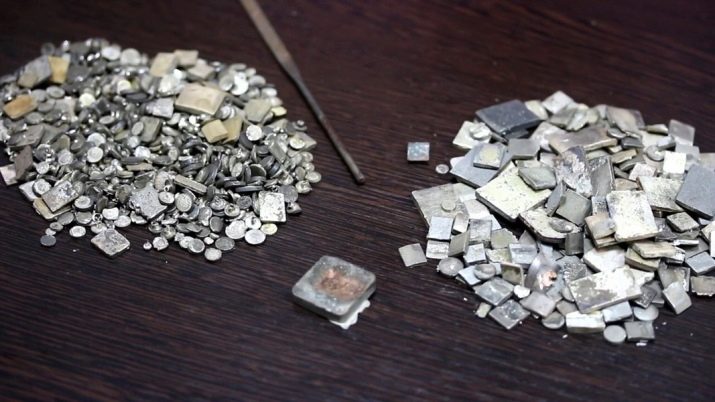
How to distinguish from other metals?
Silver is a fairly popular metal that can be compared to gold in demand. Arriving at a jewelry boutique, it is not difficult to distinguish gold objects, for example, from cupronickel. It is impossible to mix yellowish reflections with other metals. But silver in this matter requires a more scrupulous approach. It is not always possible to understand that ordinary iron is exposed under the guise of silver.
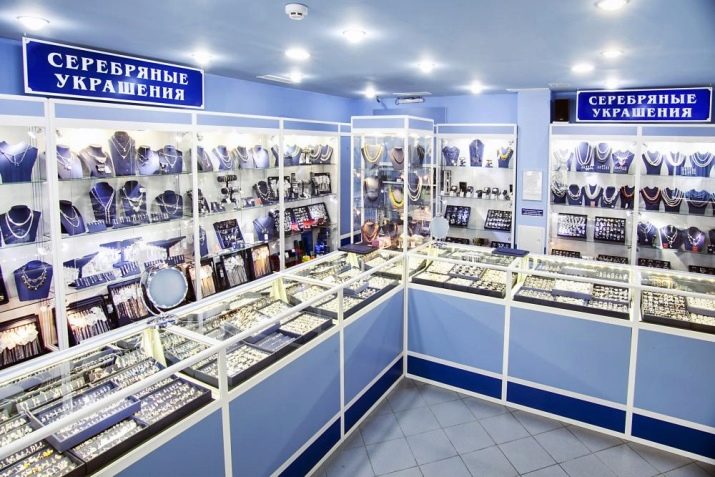
Unfortunately, unscrupulous sellers often sell customers products made of aluminum, stainless steel, iron or steel under the guise of noble silver. And in order not to fall for their tricks, you need to know some of the visual features of silver metal.
First of all, you need to get acquainted with the differences between silver and platinum. Deceivers who want to cash in on the trust of customers, offer them silver jewelry and other items in the guise of real platinum. The reason for the deception lies on the surface. Platinum is a more precious metal than silver. And ignorant people, trusting the seller, purchase ordinary silver products at huge prices.

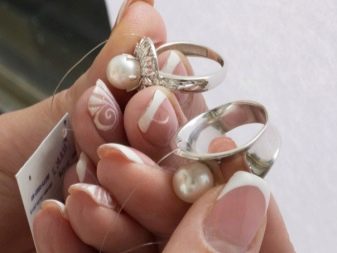
The main difference between silver and platinum is the size of the products. Platinum is a very expensive material, respectively, making miniature jewelry out of it is unprofitable. In addition, platinum is much heavier than silver. Special attention should be paid to the color of the product. Silver has a grayish tint, platinum is slightly lighter. When hit by sunlight, it casts white. In a similar pattern, silver is distinguished from white gold.
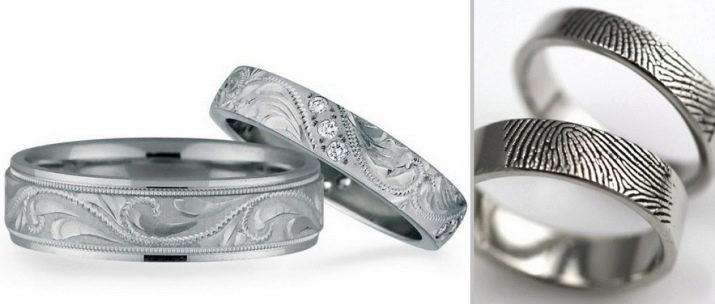
It is much more difficult to find the difference between silver and tin. Visually, they are very similar, it is impossible to find differences even with an armed look. Yes, and by weight, both metals are practically no different. The same goes for palladium. Tests with iodine and nitric acid will help determine silver.
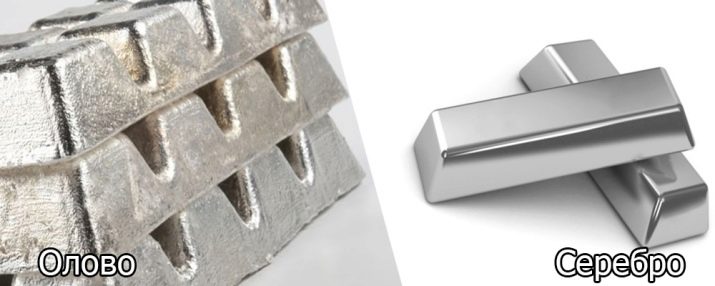
In terms of color saturation, silver is very similar to cupronickel. And to determine the difference between them by eye is very difficult. Their main difference is magnetism. Cupronickel, as you know, is an alloy of non-ferrous metals, namely: copper, nickel, iron and manganese, which has magnetic properties. Silver cannot boast of magnetic qualities.
Silver can only be distinguished from brass by color. Brass has a reddish tint, slightly resembling rust.
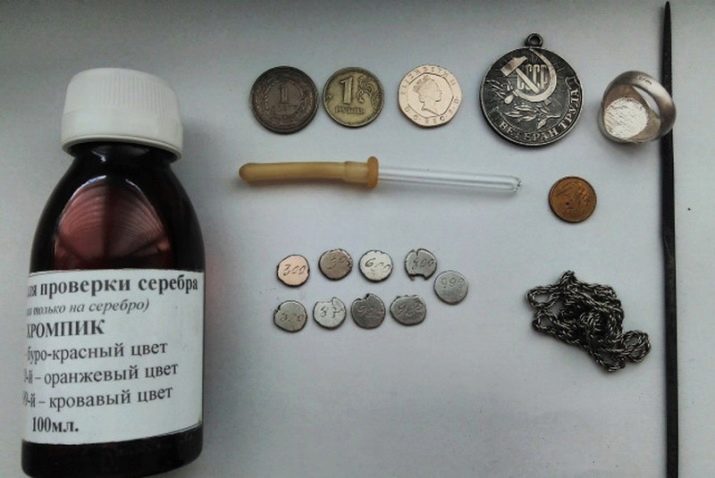
It is much more difficult to determine the naturalness of silver compared to surface silvering. The surest way to identify the original product is a test. Products that have gone through the silvering procedure are not branded, since a small fraction of the precious metal was used in their creation.
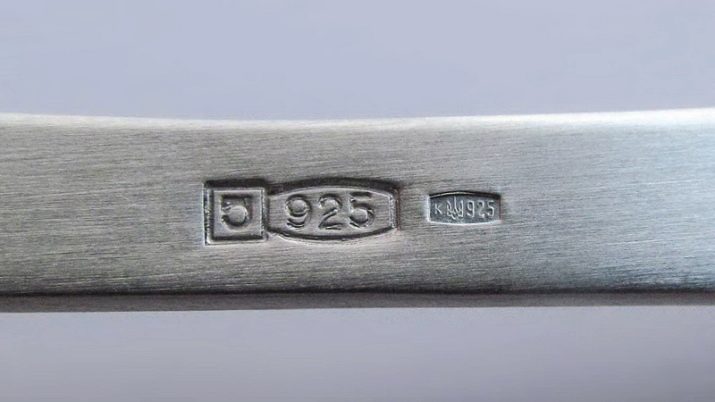
If the sample is missing, you need to carefully look at the thing, examine its shape and check the condition. If the item has gone silver-plated, scuffs and even chips may appear in some parts of the jewelry.
There is another test to determine the naturalness or silvering of products. But it may take several weeks to verify it. If rust has formed on the product, then it is made of brass with surface silvering.
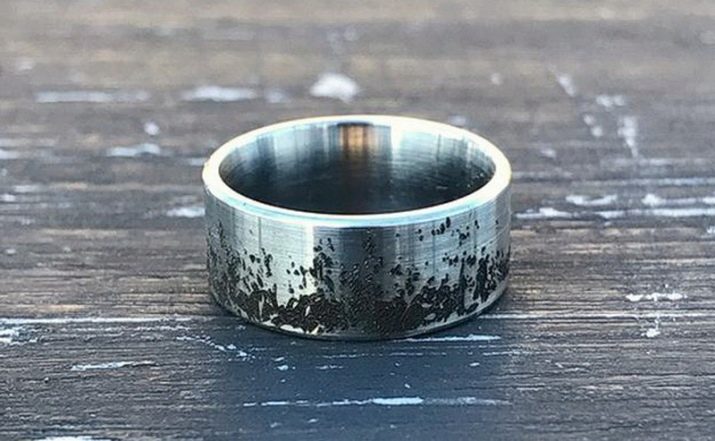
For how to check silver at home for authenticity, see the next video.
